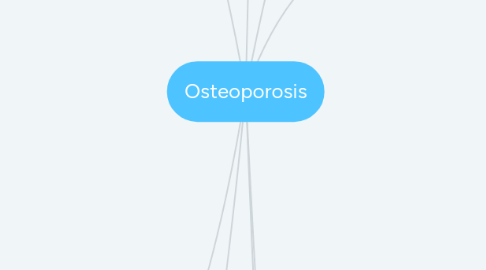
1. The remodelling of bone is a normal process, and reaches its peak at age 30 known as the peak bone mass. After this age the rate of osteoclast activity begins to gradually remove more bone than osteoblasts can make. This causes the development of osteoporosis, a condition caused by weakened bones, resulting in soft bones that are more prone to fractures (Nucleus Medical Media, 2014).
2. Clarke, B. (2008). Normal Bone Anatomy and Physiology. Clinical Journal of the American Society of Nephrology : CJASN, 3(Suppl 3), S131–S139. Normal Bone Anatomy and Physiology International Osteoporosis Foundation. (2017). Secondary Osteoporosis. Retrieved from https://www.iofbonehealth.org/secondary-osteoporosis Lab Tests Online. (2013). Osteoporosis. Retrieved from http://www.labtestsonline.org.au/learning/index-of-conditions/osteoporosis/tests Lee, J., & Vasikaran, S. (2012). Current recommendations for laboratory testing and use of bone turnover markers in management of osteoporosis. Annals of laboratory medicine, 32(2), 105-112. Metcalfe, D. (2008). The pathophysiology of osteoporotic hip fracture. McGill Journal of Medicine : MJM, 11(1), 51–57. Medscape. (2017). Osteoporosis. Retrieved from https://emedicine.medscape.com/article/330598-overview#a3 Nucleus Medical Media. (2014). Osteoporosis, Nucleus Health. [YOUTUBE]. Retrieved from https://www.youtube.com/watch?v=eYGkT6OrBk0 Office of the Surgeon General. (2004). Bone Health and Osteoporosis: A Report of the Surgeon General. Retrieved form https://www.ncbi.nlm.nih.gov/books/NBK45504/ Osteoporosis. (2017). The Mayo Clinic. Retrieved from https://www.mayoclinic.org/diseases-conditions/osteoporosis/symptoms-causes/syc-20351968 Osteoporosis Australia. (2014). Diagnosis. Retrieved from https://www.osteoporosis.org.au/diagnosis Parathyroid. (2016). Osteoporosis and Parathyroid Disease (Hyperparathyroidism). Retrieved from http://www.parathyroid.com/osteoporosis.htm
2.1. Reference List
3. Aetiology
3.1. Osteoblasts are cells that make new bone tissue using minerals such as calcium and phosphate from the blood
3.2. Osteoclasts are cells that break down bone tissue
3.3. Osteoporosis develops when osteoblast activity can no longer keep up with the rate of osteoclast activity
3.4. Primary Osteoporosis - related to older age, and is more prone in women during menopause due to the lack of oestrogen Secondary Osteoporosis- affects both children and adults and is related to other diseases or conditions, including cancer, hormonal complications or use of certain medications (International Osteoporosis Foundation, 2014).
4. Risk Factors
4.1. Secondary Osteoporosis - Anorexia - Multple Sclerosis - Rheumatoid Arthritis - Coeliac Disease - Hormonal issues (PTH, oestrogen, testosterone) - Lifestyle Factors (cigarette smoking, excessive alcohol consumption) -Cystic Fibrosis
4.2. Primary Osteoporosis -LBM before age 30 - Genetic Predisposition - Female - Poor diet and and lack of weight bearing exercise - Vitamin Deficiencies - Certain Medications (steroids or seizure medications) - Lifestyle Factors (cigarette smoking, excessive alcohol consumption) - Menopause -Hormonal Issues (PTH, oestrogen, testosterone) (International Osteoporosis Foundation, 2014).
5. Impact of aetiologies in the pathogenesis of osteoporosis at a structural and cellular level
5.1. Bones are constantly undergoing a process of remodelling during life, due to the activity of osteoblast and osteoclast activity. Bones are hollow, with the outer dense shell known as the cortical bone. Inside the cortical bone is a fine network of connecting rods and plates called the trabecular bone.
5.2. Under normal conditions, osteoclast activity requires weeks to resorb bone, whereas osteoblast activity requires months. Therefore, any process that increases the rate of bone remodelling will result in net bone loss over time. (Medscape, 2017).
5.3. Accelerated bone loss can be affected by hormonal status, as seen in older men or women, or can be secondary to various diseases.
5.3.1. Hormonal activity plays a major role in the aetiology of osteoporosis. Parathyroid hormone (PTH) controls calcium and phosphorus levels in the blood. When blood calcium levels drop too low, PTH releases calcium from the bones into the bloodstream. This is a tightly regulated process to ensure the amount of calcium in the blood and bones remains at a normal high level. Hyperparathyroidism is the result of too much PTH resulting in the bones releasing excessive amounts of calcium in the blood at a rate that is too high. This causes the bones to lose their source of calcium and results in the aetiology of osteoporosis (Parathyroid, 2016).
5.3.2. Osteoporosis is common in women after menopause, the lack of oestrogen causes osteoclast production to increase. Oestrogen affects bones indirectly through cytokines and local growth factors. Oestrogen deficiency results in excessive bone resorption accompanied by inadequate bone formation (Medscape, 2017).
6. Laboratory Investigations
6.1. Low bone mass is understood through a bone mineral density test. Bone segments are analysed through X-rays. Imaging options include: - single/double-photon absorptiometry (SPA/DPA) - dual-energy X-ray absorptiometry (DEXA) - quantitative computed tomography (QCT) scanning - magnetic resonance imaging (MRI) (Lee, J., & Vasikaran, S, 2012)
6.1.1. Various tests are used to determine the reasoning behind low bone mass - complete blood count - measure serum calcium level - urine calcium estimation - renal and liver function tests - vitamin D levels - hormone level
6.1.1.1. Osteoporosis diagnostic criteria: T score: 1 to -1 = Normal -1 to -2.5 = Osteopenia (at risk of developing osteoporosis -2.5 or lower = Osteoporosis (Osteoporosis Australia, 2014).
